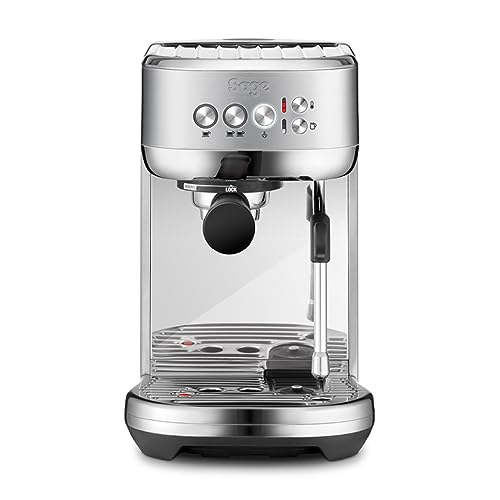How to Build a Professional Espresso Machine
For cafes and coffee shops looking to attract customers who have passion for espresso and barista abilities, This is a great option. It's the official barista machine for World Barista Championships and it really does show.
The barista can refill the reservoir with water throughout their shift. The machine also comes with steam wands with cool-touch technology and a hot water tap for tea.
Water
A commercial espresso machine should be able to create a huge amount of espresso-based drinks with efficiency. They are typically made of stainless steel, which is strong and resistant against breakages and scratches. Stainless steel espresso machines also make it easier to keep clean and maintained.
A good quality machine should have an independent shut-off valve for the water pipe in order to prevent the build-up of limescale. This will ensure that any repairs are made to the affected parts of the machine and won't impact the rest of your operation.
Test your water to ensure it is treated properly. You can remineralize the water you distill by adding a few minerals. This could reduce its anti-erosive properties as well as improve its flavor, but it could also cause damage to certain machines. Remineralized wate makes the boiler sensor believe that the machine is full, even though it isn't. This can cause the machine to overheat and become damaged.
Grinder
The grinder is a vital element for a successful espresso machine. The grinder turns an unground, raw coffee bean into a finely -ground coffee that can be properly tamped into the filter basket for an outstanding extraction.
Professional espresso machines of commercial grade typically come with a built-in grinder that can be programmed to grind various sizes of drinks, which ensures consistency in results every time. Super-automatic machines go a step further and automatize the entire process from brewing, to grinding and dispensing. These types of machines typically get high scores in Lab tests for their hands-off accessibility.
A manual or semi-automatic espresso machine requires more involvement from the barista, but the quality of the final product is often worth it. This model earned an 2022 Good Housekeeping Coffee Award for its intelligent dosing system that weighs and dispenses the correct amount of ground coffee each time. It also has a low-pressure pre-infusion system that allows for smooth extraction and a milk frothing wand that did well in our tests for producing rich, thick steamed milk.
espresso coffee makers is an important aspect in espresso. If the temperature of the water is not at its ideal level, it can cause extraction to be impeded and even result in bitter coffee.
High-quality espresso machines come with tools to help you maintain the proper temperature of your water. One method of doing this is by utilizing an PID, which monitors and adjusts the temperature of the water. Double boiler systems are another way to achieve this. You can use one boiler to heat steam and water for tea, and use the second to heat the water to brewing temperature.
Carles explains that these systems can be beneficial for large companies as well as baristas working from home. They can make it easier for novices to determine the ideal espresso shot because they are able to maintain an exact temperature and eliminate some of the variables that can throw off the flavor profile. It can also make it easier for experienced baristas to make their shots exactly the way they would like them.
Pressure

The pressure the espresso machine makes use of also affects the quality of coffee it produces. Many espresso drinkers notice that their coffees taste different based on the pressure employed, even when all other factors remain constant.
Most commercial machines use 9 bars of pressure in order to make espresso. These machines are also likely to be pump-driven, not steam-driven. While there are higher-pressure machines however, they typically require a more complicated group head design to manage the higher pressure levels.
While some espresso machines advertise 15 or 18 bars of pressure in their machines Nine bars are generally considered to be the standard when it comes to making consistently great espressos. These machines with higher pressure are generally cheaper and intended for use at home.
To put 9 bars of pressure into perspective, it's four times the pressure which is emitted by the air in your car tire. The greater pressure a professional espresso machine can apply more pressure, the better it'll be at capturing the flavor of the coffee beans you love. For this reason, it's worth investing in a high-quality machine that will deliver the best possible results.
Barista Skills
Baristas must be able to take and process orders of customers quickly and efficiently. This is particularly important during busy times at the coffee shop. Having good customer service skills is also essential for building customer relationships and increasing sales for the shop. This could include recognizing regular customers, resolving issues quickly and remaining positive and welcoming even in stressful situations.
Baristas typically need to be skilled at multitasking, since they are required to take orders, operate a cash register and communicate orders with coworkers, and answer telephone calls at the same time. This ability allows orders to be moving quickly to the customer and gives them an enjoyable experience in the coffee shop.
It is important for a barista to be knowledgeable about the various kinds of drinks that can be made with an espresso machine. You can learn about the various kinds of espresso by reading about the various types, trying them in person, or watching online videos. Many baristas find it beneficial to take classes on the matter, offered by various organizations.
